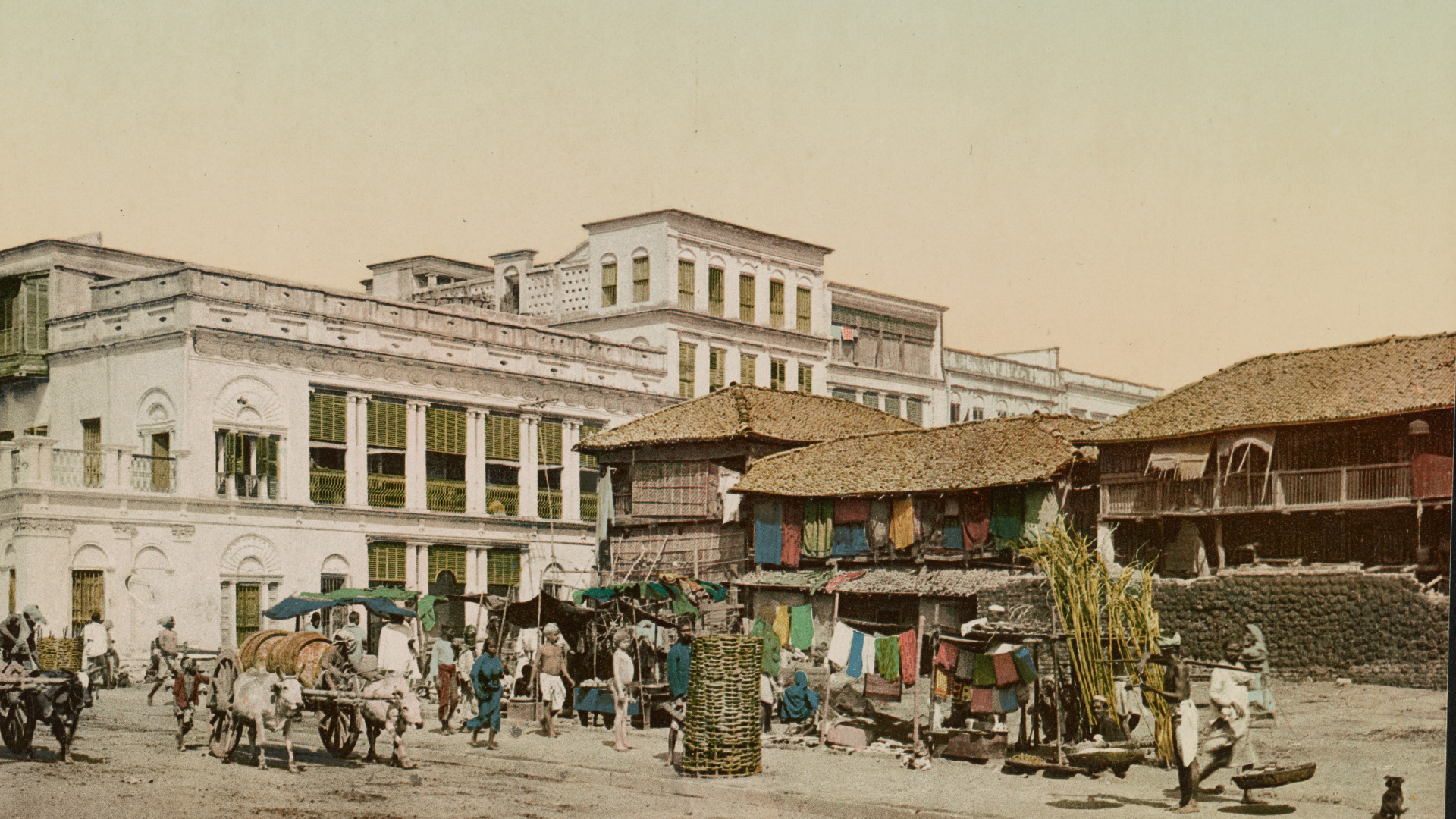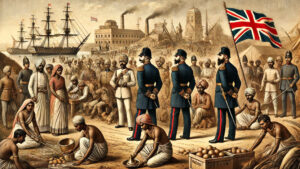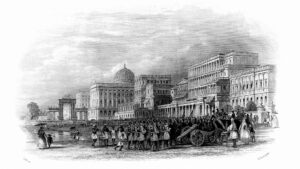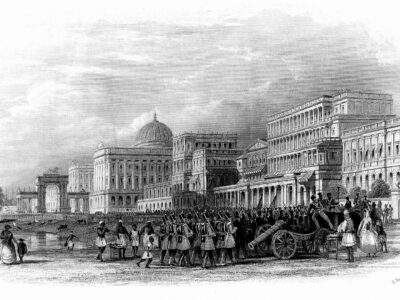Calcutta, India – 1905 AD: View of Harrison Road (Courtesy: Detroit Publishing Company)
During the early phases of British dominance in India, they systematically depleted the nation’s resources and wealth by imposing levies on Indian rulers, zamindars, merchandisers, and the general populace. Also, they subjected local artisans, cultivators, and traders to intimidation and exploitation, further worsening the economic repercussions of their rule by taking control of the surplus revenue.
As British dominion solidified and stability ensued in the region, the blatant and overt looting of earlier times was replaced by a more systematic form of colonial exploitation. This new approach hinged on several key methods. The backbone of this exploitation was an unbalanced trade system, where Britain reaped benefits at the expense of India. This included exporting British capital and business ventures to India, ensuring profits flowed back to the colonizer. Furthermore, British nationals were predominantly employed within the colonial administration, consolidating control and influence.
Another significant aspect was the extraction of Indian resources by exporting goods in excess, tipping the economic scales in Britain’s favour. The manipulation of exchange rates further exacerbated this disparity, ensuring British financial supremacy while disadvantaging India. Additionally, preferential tariffs were granted to Britain, reinforcing this economic stranglehold. Lastly, Indian resources were extensively utilized for Britain’s military campaigns and conquests, further depleting the subcontinent’s wealth and resources for the benefit of the colonial power.
The Exploitation of Bengal Fuels England’s Industrial Advancement
In the early 17th century, the East India Company started a factory in Surat under the Mughal Emperor’s permission, later founding Madras in the South. By the end of the 17th century, they had established strategic points along India’s coast and began moving inland. The 1757 Battle of Plassey marked their significant territorial control, soon encompassing Bengal, Bihar, Orissa, and the east coast. Further expansion occurred in the early 19th century, reaching Delhi, followed by post-1818 Maratha defeat advancements and the 1849 Sikh Wars.
The British presence in Madras spans over 300 years, ruling Bengal and Bihar for 187 years and expanding to southern India 145 years ago, central and western India about 125 years ago, and the Punjab 95 years ago. Their policies and administrative methods evolved over this period, influenced by developments in England and their consolidating rule in India, with the treatment of conquered areas varying based on the character of the defeated rulers. For instance, in Bengal, the British targeted the Muslim gentry, whereas in Punjab, there was no initial conflict with Muslims.
A stark reality is the poverty in the longest British-ruled parts of India, unaffected by urban and industrial growth. The dire state of the masses is evident in Bengal, Bihar, Orissa, and parts of the Madras presidency. British rule in Bengal began with outright plunder and oppressive land revenue practices, evolving into less visible but more damaging legalized exploitation. The early British regime in India was marked by corruption, nepotism, and greed. The outcomes culminated in the catastrophic famine of 1770, decimating more than a third of the populace in Bengal and Bihar. However, this was rationalized as a necessary sacrifice for progress, with Bengal playing a pivotal role in sparking England’s Industrial Revolution.
The Demise of India’s Agricultural and Industrial Output
The East India Company, initially established to transport Indian goods like textiles and spices to Europe, faced a policy shift as industrial techniques advanced in England. British industrial capitalists, influencing Parliament, led to Indian goods being barred from Britain and the Indian market opening to British products, suppressing Indian manufacturing through various legislative measures and duties, allowing free entry for British goods. Consequently, Indian industries like textiles, shipbuilding, and metalworking collapsed rapidly in Bengal and Bihar and gradually elsewhere with British expansion and railway construction.
Political and economic pressures, coupled with a deliberate effort to prevent the adoption of new industrial techniques in India, halted its economic development. This strategy, prohibiting machinery imports, created a vacuum filled with British goods, spurring widespread unemployment and poverty and forming a classic colonial economy, with India supplying raw materials and buying British industrial goods.
The eradication of the artisan class led to massive unemployment, with traditional skills becoming redundant and no opportunities for new professions. These displaced artisans, unable to integrate into the saturated agricultural sector, exacerbated rural poverty and decreased living standards. This shift contrasted with global trends, where populations moved from agriculture to industry; British policies reversed this in India, making agriculture nearly the sole occupation.
India’s increasing ruralization, with 74% reliant on agriculture by the mid-20th century, contrasts with the urbanization in other progressing nations. This trend contributed to India’s severe poverty. The crisis in industry extended to agriculture, resulting in smaller holdings, increased land debts, and a rise in landless labourers. While under an industrial capitalist regime, India’s economy remained largely pre-capitalist, lacking many wealth-producing elements.
The transition to capitalist industrialism, typically marked by hardship and human suffering, was particularly severe in India. The costs of this transition in Western Europe, including human suffering, were largely borne by colonies like India through famines, deaths, and extensive unemployment. Western Europe’s industrial shift prices were offset by exploiting economies like India.









